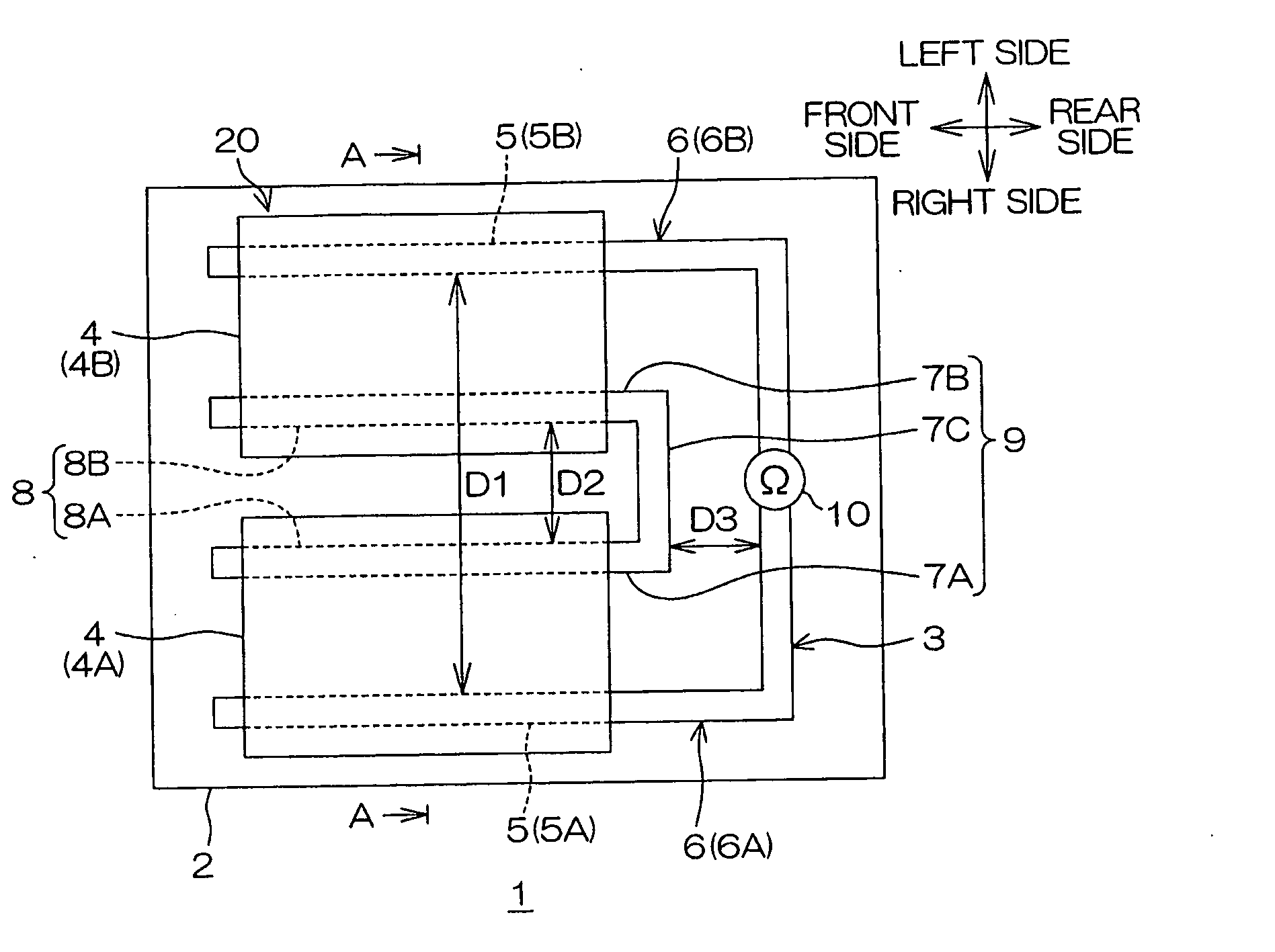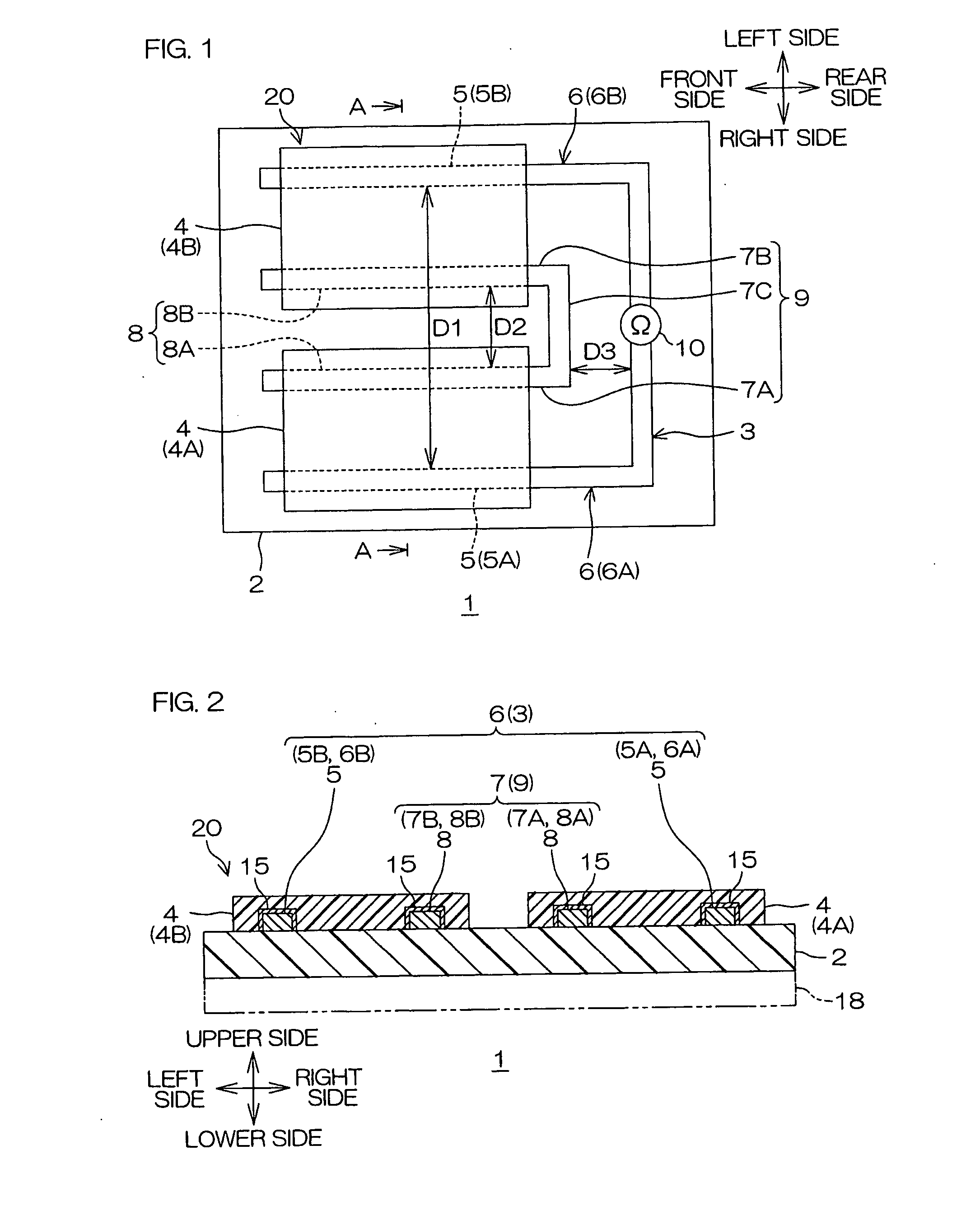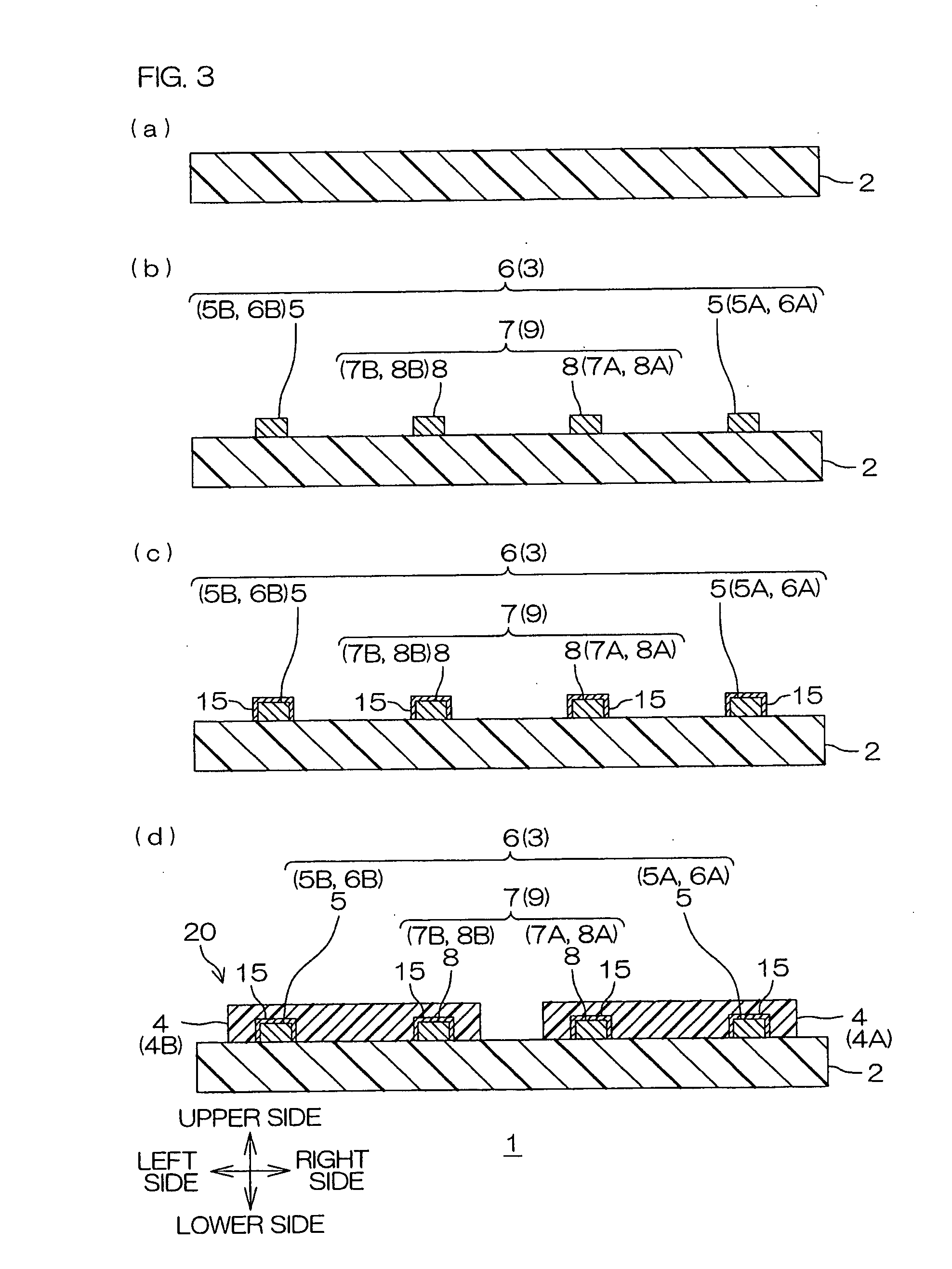Substance detection sensor
a substance detection and sensor technology, applied in the direction of resistance/reactance/impedence, instruments, measurement devices, etc., can solve the problems of inability to accurately detect a substance and considerably uneven thickness, and achieve high accuracy, reliably perform substance detection, and reliable performance
- Summary
- Abstract
- Description
- Claims
- Application Information
AI Technical Summary
Benefits of technology
Problems solved by technology
Method used
Image
Examples
example 1
[0172]A liquid crystal polymer copper-clad laminate (product number: ESPANEX L-12-25-00NE, single-sided, standard type, manufactured by Nippon Steel Chemical Co., Ltd.) in which a 12 μm-thick copper foil as a conductive layer was preliminarily laminated on the upper surface of a 25 μm-thick liquid crystal polymer sheet as an insulating layer was prepared, and an electrode pattern and a bridge wire having the above-mentioned pattern were simultaneously formed by a subtractive method (see FIGS. 1 and 3(b)).
[0173]Each of the first and the second electrode wires had a length of 20 mm and a width of 0.25 mm, and a spacing (D1) between the first and the second electrode wires was 5 mm. The bridge wire had a width of 0.25 mm, each of the first and the second connecting wires had a length of 19 mm, and a spacing (D2) therebetween was 2.5 mm. Each of a spacing between the first electrode wire and the first connecting wire and a spacing between the second electrode wire and the second connect...
example 2
[0179]The gas detection sensor was produced in the same manner as in Example 1 except that two bridge wires were formed in place of one bridge wire, and that three conductive layers (a first conductive layer, a second conductive layer, and a third conductive layer) were formed in place of two conductive layers (the first and the second conductive layers) (see FIG. 4).
[0180]Incidentally, the spacing (D2) between the first connecting wire and the second connecting wire in each of the bridge wires was 1.65 mm, and each of the spacing between the first electrode wire and the first connecting wire of the first bridge wire, the spacing between the second electrode wire and the second connecting wire of the second bridge wire, and the spacing between the second connecting wire of the first bridge wire and the first connecting wire of the second bridge wire was 1.3 mm.
[0181]Further, the conductive component-containing liquid was sprayed three times. A mask having an opening (opening area of...
example 3
[0182]The gas detection sensor was produced in the same manner as in Example 2 except that the shape of the bridge wire was changed from a generally U-shape in plane view to the shape of a thin flat sheet (see FIG. 5).
[0183]Incidentally, the bridge wire was formed so that its outer shape was the same as the outer peripheral edge of the bridge wire in Example 2.
PUM
 Login to View More
Login to View More Abstract
Description
Claims
Application Information
 Login to View More
Login to View More - R&D
- Intellectual Property
- Life Sciences
- Materials
- Tech Scout
- Unparalleled Data Quality
- Higher Quality Content
- 60% Fewer Hallucinations
Browse by: Latest US Patents, China's latest patents, Technical Efficacy Thesaurus, Application Domain, Technology Topic, Popular Technical Reports.
© 2025 PatSnap. All rights reserved.Legal|Privacy policy|Modern Slavery Act Transparency Statement|Sitemap|About US| Contact US: help@patsnap.com



